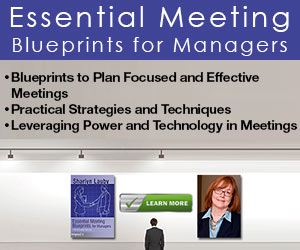Estimated reading time: 4 minutes
I recently published an article on “How to Create a Training Session Quickly”. If you haven’t seen it, I hope you’ll check it out. One of the things I didn’t talk about in that article was training materials.
Good learning sessions provide participants with training materials. One of the main reasons for doing so is to give participants a post-training reference guide of sorts. After training, employees can refer to the materials and their notes if they have questions. This is particularly helpful if the training session involves a lot of details, like how to operate a piece of equipment.
Designing learning materials can be challenging because people might feel that they need to design something fancy. Not true. The goal of training materials is to be useful. And fancy doesn’t always equate with useful.
One thing I’ve seen is the use of a PowerPoint slide deck as the participant guide. I’m not against using a PowerPoint deck as a participant workbook, if it makes sense (and it’s useful). Maybe instead of printing the entire deck, take the most pertinent slides and create a smaller but still valuable document. That could reduce printing costs and still give employees helpful training materials.
If organizations don’t want to change their existing participant workbooks, then make sure employees can always access them. Training materials don’t have to be secretive. Put them in a library (whether hardcopy or online) that employees can access any time they need it.
Another way to provide participants with training materials that doesn’t involve printing a bunch of paper is to create job aids. I’ve attended a couple of training sessions that involved a process – like how to plan an employee one-on-one meeting – where we were provided with a template to use in planning the meeting. In fact, one session provided a notepad with the meeting steps on it so participants would always have them handy. They also provided an index size laminated card that participants could keep in their planner or portfolio. That way if they were remote and needed the steps, the card was right there. The takeaway from the training session was to remember the steps. And the training materials supported that.
A second form of job aid is a flow chart. If the training session is focused on a process, like the company’s disciplinary procedure. And the training session is to provide managers with guidance on when they should initiate disciplinary action and at what point they need to get HR involved. This is a common training topic. Maybe at the end, giving managers a flow chart would help them manage the process well. In fact, at the bottom of the flow chart, there could be a legend or key with icons to remind managers about where to go for more information, etc.
My point is that training materials do not need to simply be a printed deck. And they don’t need to be designed by a professional artist. Training materials should be useful. They should help participants remember the learning content. They should be something that participants can use after the training session is over. If you’re trying to figure out if your training materials are perceived as being valuable, ask people. You could do this during a pilot session or ask a specific question on a post-training survey.
Organizations continue to be focused on getting value for everything they do. This has always been true and it’s even more so today. Now is a perfect time to ensure that what happens during training is adopted in the operation. Useful training materials could be a great step to help do that.
Image captured by Sharlyn Lauby at the 34th Street graffiti wall in Gainesville, FL



